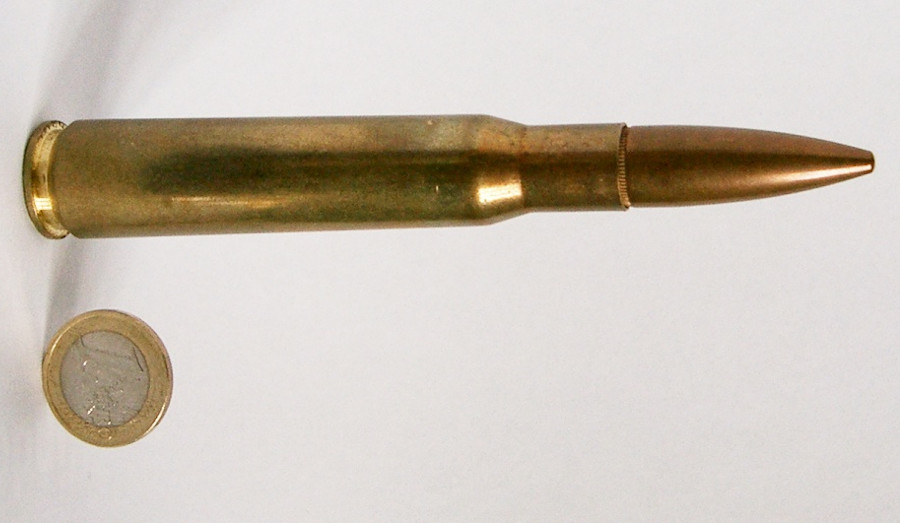The passage of the National Firearms Act in 1934 ushered in the most sweeping restrictions on firearms ownership ever seen in the United States. Whole categories of firearms were banned from common use. Among them were firearms with a bore larger than .50-caliber unless they were deemed to be for “sporting purposes,” a completely arbitrary classification. As a result, many firearms became categorized as destructive devices, incurring onerous taxes and limiting their availability. And future developments of large-caliber firearms became stymied.
One of the calibers to escape that classification was the .50 Browning Machine Gun (BMG), a cartridge first developed during World War I to give US forces greater stopping power against light armored vehicles. The cartridge is essentially a .30-06 Springfield scaled up to .50-caliber, with an overall length of nearly 5.5 inches.
The performance of the original M2 ball load pushed a 710-grain bullet to around 2,800 feet per second, for over 12,000 foot-pounds of muzzle energy. Current M33 ball ammunition features a 660-grain bullet at about 2,900 feet per second, again for over 12,000 foot-pounds of muzzle energy. Modern handloads in some .50 BMG rifles today can push lighter bullets to over 3,000 feet per second, with 800-grain bullets able to be pushed to 2,900 feet per second, for 15,000 foot-pounds of muzzle energy, more than three times the power of many common elephant gun cartridges.
That kind of performance makes the .50 BMG the most powerful commonly available cartridge available today. And while the M2 machine gun for which the .50 BMG was originally created never achieved much success on the civilian market, the ability of the .50 BMG to push large heavy bullets to long distances made it popular with long-range shooters. In fact, the longest confirmed combat sniper kill in history was made with a rifle chambered in .50 BMG in 2017, at a distance of over 2 miles.
Plenty of civilians enjoy pushing the .50 BMG to its limits, shooting it at long ranges. Specialized rifles such as the Barrett M82A1 have been developed to get the most out of the cartridge. Unfortunately, many governments have used the .50 BMG’s capabilities in fearmongering attempts at gun control. Claims that it can kill from miles away, or that it can take down a helicopter, have spurred some state governments and foreign governments to ban or restrict the ownership of rifles chambered in .50 BMG. That in turn has prompted the development of alternate cartridges such as the .416 Barrett and the .510 DTC to get around those restrictions.
As you might expect with such a large cartridge, ammunition is expensive. Expect to pay $3 per round minimum for ball and tracer ammunition, and at least $4 for armor piercing ammunition. Of course, the wide availability of surplus ammunition of various types like that is also one of the main appeals of the .50 BMG. While .50 BMG firearms may be large and unwieldy, they can be very effective when used in a static defensive position due not only to their power but to the performance of the various bullets available for them.
If you have the ability to stretch the .50 BMG’s legs and a range with a sufficient backstop to use the cartridge safely, it can be a very enjoyable cartridge to shoot. And if you think you have the need for a powerful rifle for long-range shooting or effective defensive use, it can’t hurt to think about adding a .50 BMG rifle to your armory.
This article was originally posted on Red Tea News.





